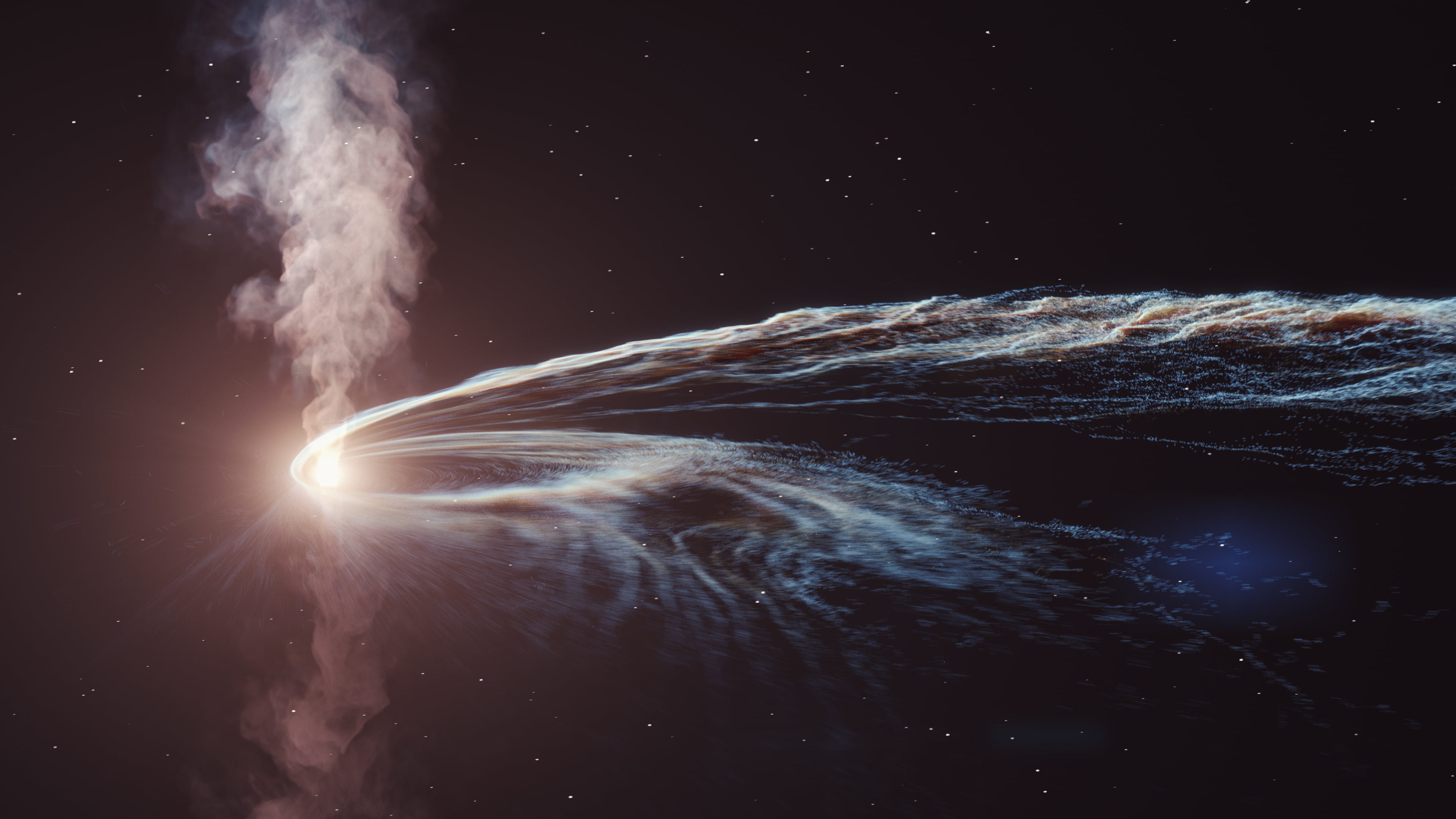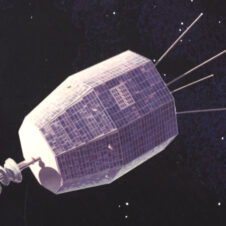An MIT-led study triggered by a surprising deep space ‘flash’ could help us learn how supermassive black holes feed and grow.
In February 2022, astronomers at the Zwicky Transient Facility based at California’s Palomar Observatory, detected a new light in the sky estimated to be brighter than a thousand, trillion suns.
The unusual signal was shared with the astronomy community, resulting in an international collaboration of astronomers focusing their instruments on its source – AT 2022cmc.
The resulting study, published in Nature Astronomy today, attributes the burst of light to a black hole ripping apart an unlucky star in what is known as a tidal disruption event (TDE), leading to jets of accelerated matter being ejected into the universe at almost the speed of light.
Credit: Dheeraj Pasham (MIT), Matteo Lucchini (MIT) and Margaret Trippe
The International Centre for Radio Astronomy Research’s (ICRAR) Professor James Miller-Jones and Dr. Adelle Goodwin are co-authors of the study, which was led by MIT’s Dr Dheeraj Pasham and Dr Matteo Lucchini.
Professor Miller-Jones is the Science Director at ICRAR’s Curtin University node, and said while detections of TDE’s are relatively common, seeing one this energetic is rare.
“TDEs are detected at the rate of about one or two every month,” said Professor Miller-Jones.
“However, only a small percentage have been seen to launch the sort of powerful relativistic jets we saw with this event.”
“In fact, this is only the fourth one ever detected and is the most distant and luminous discovered to date.”

Observations of supermassive black holes tearing stars apart have been made in the past, but it’s rare for astronomers to capture events as luminose as seen at AT 2022cmc. Image credit: DESY, Science Communication Lab
Dr. Adelle Goodwin, who was recently named a Superstar of STEM by Science and Technology Australia and is a Research Associate at ICRAR-Curtin, says studying these rare events is vital to learning how black holes evolve.
“We know supermassive black holes grew very fast in the early Universe,” said Dr. Goodwin.
“These events dump an extremely large amount of gas close to a black hole very quickly, allowing these astronomical objects to grow.”
“These rarely observed events allow us to study the formation of jets around supermassive black holes in real time, instead of the millennia they typically can take to evolve.”
Professor Miller-Jones and Dr Goodwin have written a piece for the Conversation discussing the studies findings which you can read here: https://theconversation.com/astronomers-witness-the-dying-flare-of-a-star-torn-apart-by-a-black-hole-halfway-across-the-universe-195453
The study can be read in full on Nature Astronomy’s website: https://www.nature.com/articles/s41550-022-01820-x.

